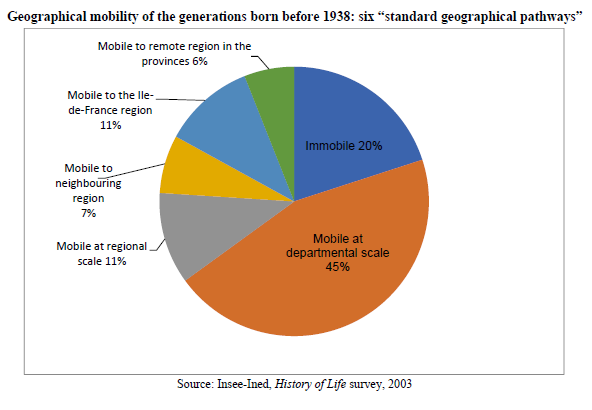Economie et Statistique / Economics and Statistics n° 497-498 Geographical pathways of individuals born in France: Construction of a typology
Article on one page
Key question
The rise of geographical mobility is an important aspect of the changing patterns in lifestyles over the past few decades. Since the 1980s, geographical mobility has a highly investedresearch topic in demographics, geography and sociology. Nevertheless, few studies have aimed to identify and describe “standard geographical pathways” over the life course. What are the destinations of geographical mobility? What are the typical geographical pathways, from birth to retirement? How has geographical mobility changed over generations?
Methodology
The History of Life survey (Histoire de vie, Insee-Ined, 2003), which records all the geographical pathways of individuals since their birth, makes it possible to draw up a precise panorama of these population movements. Based on these data, a typology of geographical routes is constructed using an optimal matching method.
Main results
Of the individuals born in France and residing in mainland France in 2003, 38% have never left their department and 58% have never left their region of residence.
Most of the changes in municipality (45%) take place within the same department and the geographical pathways are characterised by strong redundancies in the sense that interdepartmental mobility often involves returns to departments in which individuals have already resided in the past.
· Six “standard geographical pathways” emerge for generations born before 1938.

Main message
Geographical mobility involving large distances (e. g. change of region) is relatively rare and predominantly involves middle managers or intermediate professions, and graduates. Most geographic paths take place at the departmental level.
Article on one page (pdf, 52 Ko )



